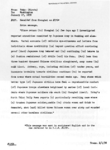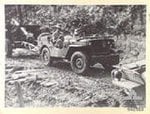Not if it works. And everything I have read suggests the Kleines Kettenkraftrad Sd.Kfz.2 light towing tractor worked just fine. It performed many of the same tasks as the American made Jeep.
I think a jeep would have been way more practical, easier to manufacture, and was made to haul 4 men and pull a trailer. In reality you could pile 6 or 8 on it and still pull a trailer. But, I still think the Kettenkrad is cool, just not as good as a jeep or weasel.


